Drought conditions pummel SA farmers, growers and families
Young mums are running out of water and farmers are on the brink as one state battles widespread drought conditions.
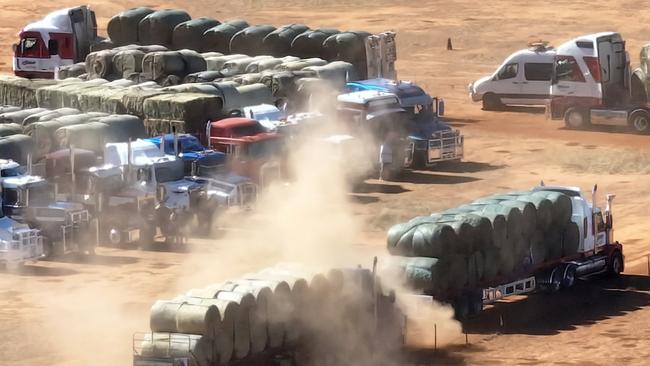
Jamie Solly has been carting water around South Australia’s fertile Fleurieu Peninsula for almost two decades and he says the drought conditions that have blanketed the state in the past 12 months are the worst he has ever seen.
“I had a young girl from Meadow ring me up with a young baby, and she had no water,” he told NewsWire this week.
“She had been told two weeks before she could get water.
“It’s just one (story) of many.
“I had a couple out the back of Finniss, towards Clayton, they had run out of water, I couldn’t get there for three or four days because I was so heavily backlogged and they had to take their newborn to their parents’ place, just so they could wash.”
The harsh conditions are widespread across South Australia, from the Fleurieu in the south and the Adelaide Hills region in Greater Adelaide to the Eyre Peninsula across the Spencer Gulf.
A stark map charting rainfall decile ranges from the Bureau of Meteorology shows the entire southern portion of the state recorded “very much below average” or “lowest on record” rainfall for the year.
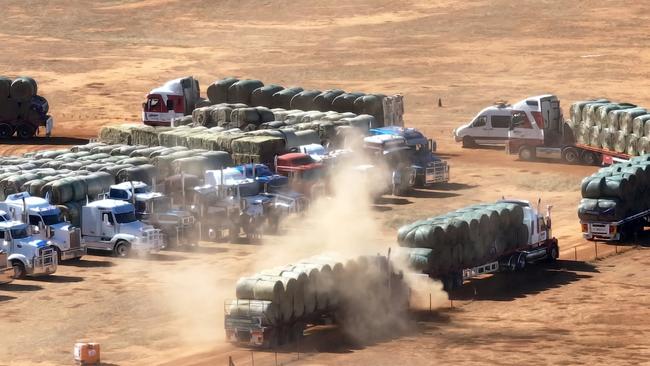
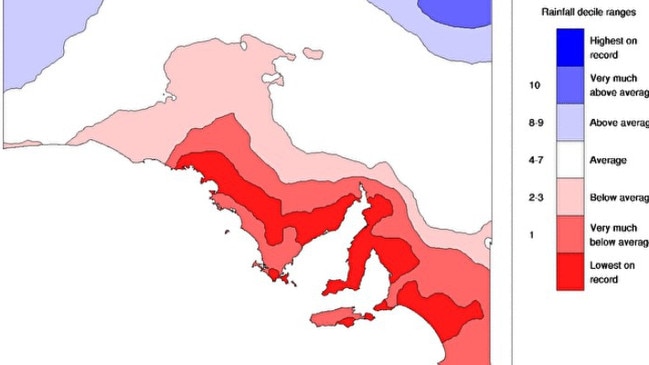
“Large parts of South Australia’s agricultural areas had their lowest on record rainfall for any 12-month February to January period during February 2024 to January 2025, with data going back to 1900,” Bureau of Meteorology senior climatologist Jonathan Pollock told NewsWire this week.
“2024 started with above average rainfall for most of South Australia during January, but then February, March, April and May saw very much below average rainfall across the agricultural areas.
“Large parts of the agricultural areas including the Eyre Peninsula, Yorke Peninsula and the Upper South East district, had their driest autumn on record.”
The drought is pushing farmers, growers, small businesses and hundreds of households to the brink.
Yankalilla Mayor and cattle farmer Darryl Houston said farmers were “destocking” and carting in water to survive.
“Farming is tough at the best of times, let alone having to buy in hay and cart in water in some cases,”he told NewsWire.
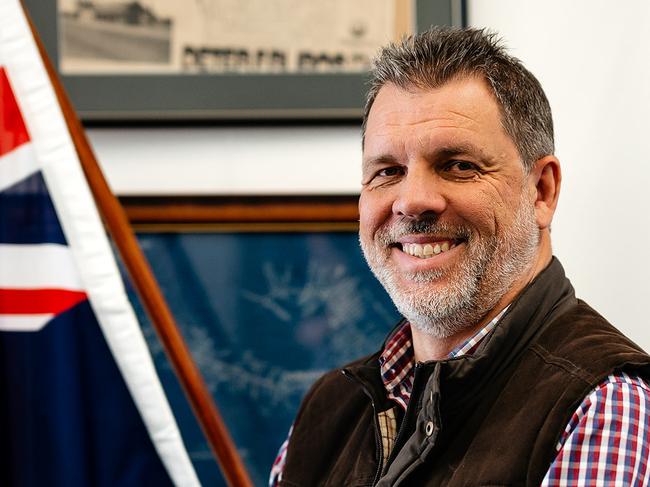
“It’s going to be a tricky next six months for sure.”
He said his own dam was close to drying up, something that had never happened before.
Hundreds of homes and farms that sit outside the region’s main towns are not connected to mains water and so depend on rain to fill their tanks and dams.
No rainfall means no water, and a phone call to providers like Mr Solly to get by.
Mr Houston said if the Fleurieu didn’t get a “good winter”, the situation would become “problematic” and farms could go bust.
“It’s definitely it is going to be a very hard year this year,” he said.
“And you would not want two years like this in a row.
“If you have another year like this following straight on, that would be problematic. You definitely couldn’t have two years in a row like this.”
Some of the state’s wine producers are also seeing impacts.
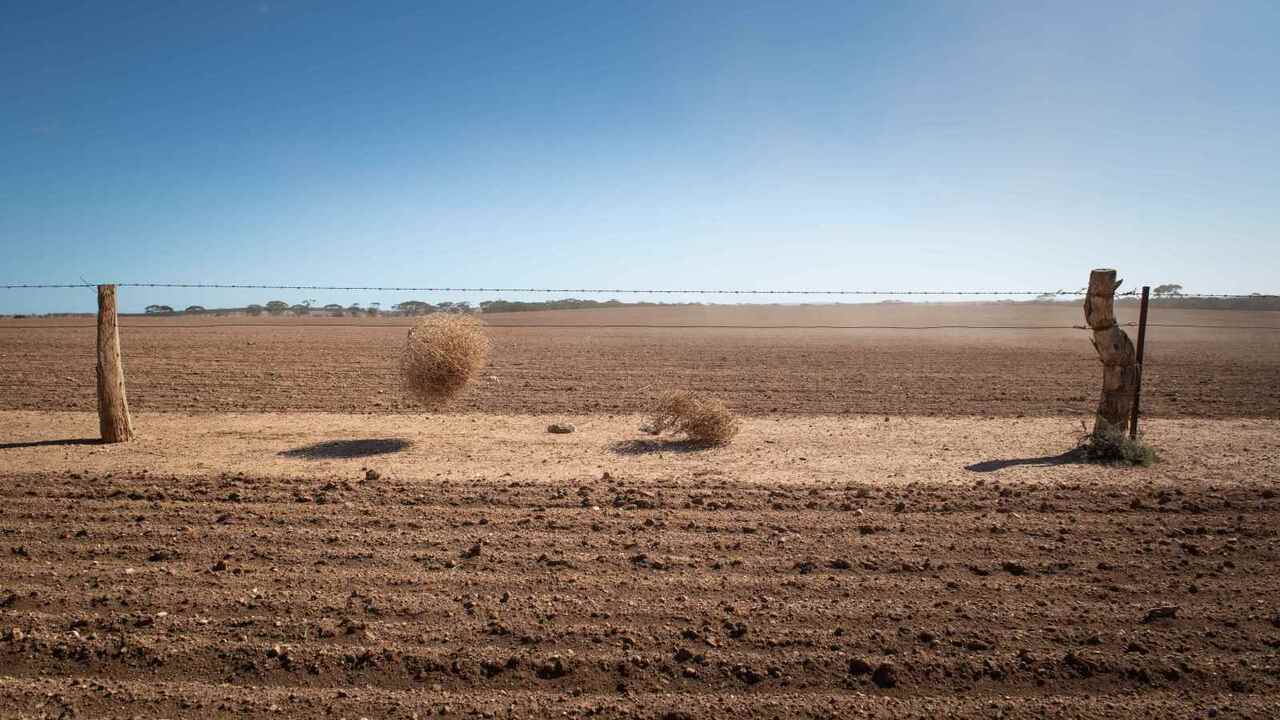
“That deficient winter rain caused us most of the problems,” Nigel Van Der Zande, the vineyard manager for the Barossa Valley’s Kaesler Wines, told NewsWire.
“We’ve got a lot of old vineyards that have very deep roots and the secret to us getting through a season in good nick, our soils are like huge sponges, and they need to fill up in the winter time with that winter rain, and when we are that deficient, that doesn’t happen.”
The dry conditions also bring with them a greater risk of frost, he said.
“They are intrinsically connected,” he said.
“A lot of people (in the Barossa Valley) got frosted and so their production will be affected, as ours has been.”
Mr Pollock warned climate influences could be pushing Australia into drier conditions.
“Australian rainfall is highly variable, however there has been a shift towards drier conditions across parts of southern Australia in recent decades, especially for the cool season months from April to October,” he said.
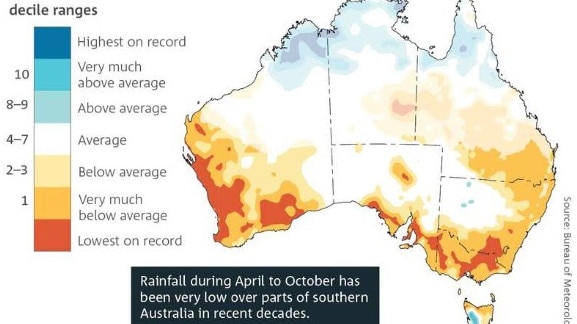
“The declining trend in rainfall is associated with a trend towards higher surface atmospheric pressure in the region and a shift in large-scale weather patterns-more highs, fewer lows and a reduction in the number of rain-producing lows and cold fronts.”
“Australia, on average, has warmed by 1.51 degrees celsius since national records began in 1910, with most warming occurring since 1950.
“Every decade since 1950 has been warmer than preceding decades.”
The state government announced an $18m drought relief package in November.
Assistance measures include $2m to help charities manage freight costs when they transport donated fodder, $1m for additional health and wellbeing support through the rural financial counselling service and $5m in grants for on-farm drought infrastructure and a $100,000 fund for communities to host events that foster connection and support.
Mr Houston said the package might not be enough to meet the challenge.
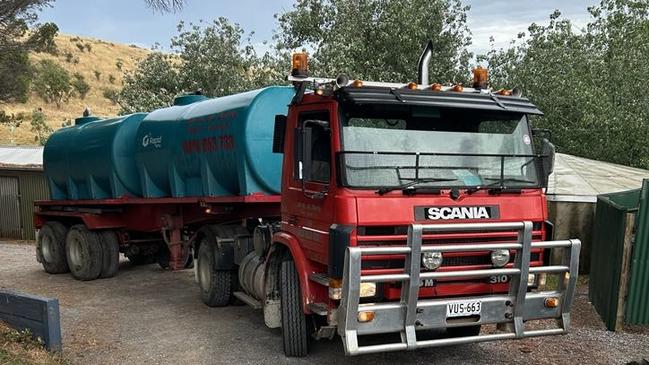
“I would think that won’t go far enough given the conditions and given it is so widespread over the entire state, pretty much,” he said.
Some 80 per cent of Mr Solly’s customers are residential but he also carts water to caravan parks, cafes, stores and farmers.
He said he could not keep up with demand and he was now booked out three weeks in advance.
“Just the sheer magnitude of calls I’m going through,” he said.
“I’m sifting through about 20 voicemails I haven’t gotten through today.
“When it gets to that point, when people are going for days without water, it plays on your mind.
“I’ve been doing this for 18 years now and we’ve always provided a service where we can get to you in 24 hours, but this year we just can’t.
“It’s becoming to a point, well it’s almost unmanageable.”
Originally published as Drought conditions pummel SA farmers, growers and families



